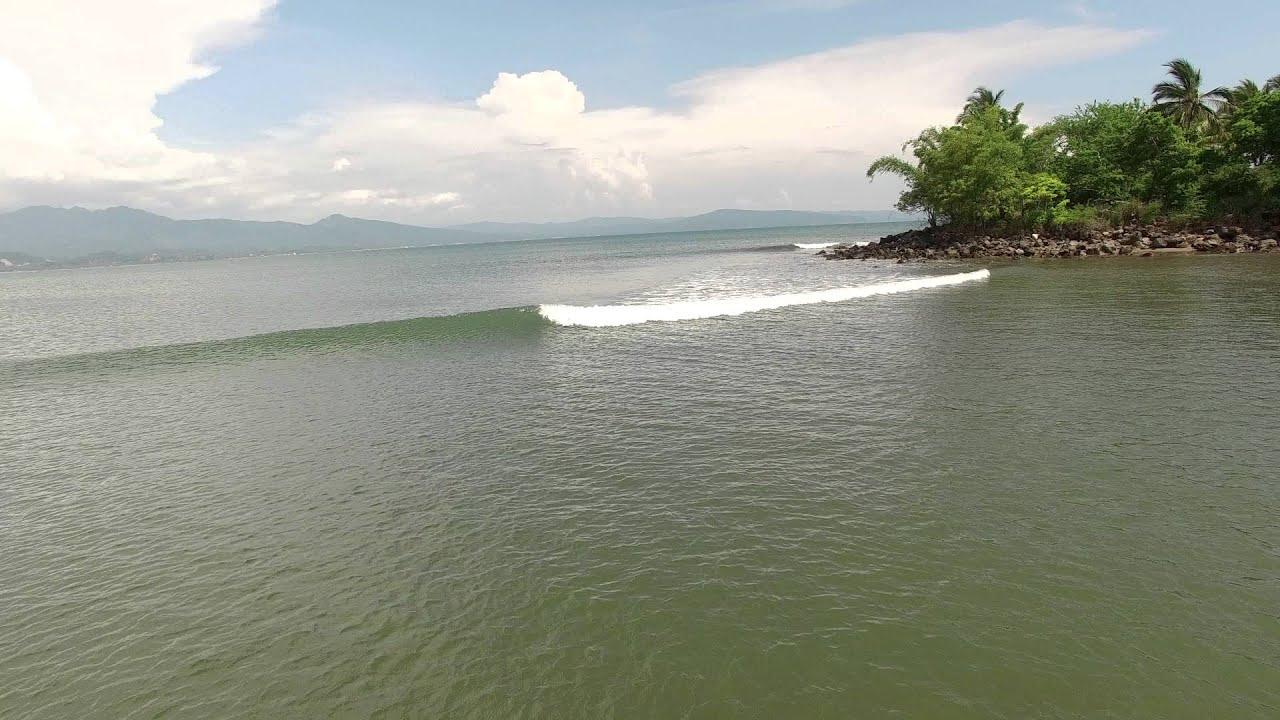How to Plan a Budget Surf Trip
1 comment
Beautiful clean wave breaking at Matachen Bay in Mexico
Sensible, thorough planning can ensure that a surf trip is affordable for pretty much any budget. You don’t have to go to a tropical location to get great waves, but combining with your annual holiday can kill two birds with one stone – you may already plan all your trips around surfing.
For an international trip, keeping costs down on flights, accommodation, and other essentials such as surf equipment, local travel costs (boats out to breaks etc.) and mobile data is easier than ever. For example, good preparation before can help identify handy tools like an Asia eSIM to keep you connected. A digital SIM lets you tap into local networks across surf-rich countries, saving you from expensive roaming fees and the hassle of switching SIM cards.
Taking your own surf gear may be cheaper that hiring when you arrive. It will all depend on the length of your stay, the equipment needed and other local factors. Planning is going to help with this.
Here's how to plan a killer surf trip without blowing your budget.
Find Surf-Friendly Flights
Flights are often the biggest chunk of a surf trip budget. You have to make sure that a flight booked will coincide with the best surf conditions for that location (surf location information can be found in our surf maps). Apps like Skyscanner, Hopper, or Google Flights allow you to compare flexible dates and alternate airports. Being flexible on your arrival and departure dates can make a significant difference in pricing. Consider flying midweek or during off-peak seasons that still align with great surf but when demand is lower. In some tropical locations, great surf can coincide with rainy season, not typically a season that non-surfing travelers would choose.
Check fares to all locations if your destination has multiple airports. For example, the UK has numerous airports, not just Heathrow. Choosing wisely can save £££.
Another example of potential savings to be made would be booking a round-trip flight to a regional hub in Asia, then using low-cost airlines for shorter connections, can also shave costs.
Budget-Friendly Stays with Local Flair
After flight costs, accommodation will likely make up the majority of your additional expense, but it doesn't have to make the trip unaffordable. Hostels, surf camps, Airbnb’s and homestays are low-cost options, especially in places like Indonesia. Booking platforms let you filter by price and amenities, and traveler reviews can give honest insight into value, conditions and potential issues. If you’re staying near a break, look for accommodation that includes surfboard rentals, breakfast, airport pickups and other essentials can save you money when all said and done.
Consider booking a few days at a time, allowing you to scout better local deals once you arrive. This also allows you to be mobile during your trip, moving do accommodation that is closer to breaks that you want to search. This means you won’t just be stuck in one location, being tied to your paid-for accommodation. With a connected device via your eSIM, you can easily message hosts, extend bookings, or check reviews on the go.
Getting Around Without Burning Your Wallet
Once you have arrived at your surfing location, how you move around matters. You’ll likely need to be mobile to be able to get to the right locations based on the local surf conditions at the time. In many Asian surf spots, scooters are the cheapest and most convenient way to get to the waves. In places like Bali, you can rent a scooter for just a few dollars daily. You’ll see many surfboards strapped to scooters on their way to and from surf breaks. Buses and trains are more cost-effective than taxis or flights for longer routes or intercity travel. Ride-hailing apps like Grab and Gojek are available in several regions and can help you avoid inflated tourist prices.

Rented surfboards all ready to go
Affordable Boards and Gear Tips
Surfboards don’t fly cheaply on many airlines. Airline board fees can sometimes be prohibitively expensive, it is essential to know the cost of transporting your board before booking the flight. If you're on a strict budget, consider renting boards at your destination may be your only option.
Many surf-friendly areas have quality rentals, often within walking distance from popular breaks. This not only avoids airline charges but also gives you a chance to try different types of boards for different waves and conditions.
If you’re bringing your board, pack it properly, taking steps to ensure that your board makes it to your destination in one piece. We have a great guide on how to pack your surfboard to avoid damage.
Also, check out or other essential travel article – surf travel packing tips.
Stay Online Without Roaming Costs
Staying connected helps with more than just social media. You’ll want data to check wave reports, message your surf buddies, book last-minute lodging, or find local places to eat. A prepaid Asia eSIM gives you access to local mobile networks without buying a new SIM card in every country. It installs digitally, meaning there’s no physical swap needed, and you can activate it before landing. Most eSIMs offer flexible data plans so you only pay for what you use. This is especially useful for surf travelers hopping between countries—it means staying connected across borders without hunting down local SIM shops in each spot.
Plan Around Waves, Not Just Places
Waves are seasonal. Good planning will give you the greatest chance that spending your surf budget will result In scorning some quality surf. Planning for the right time of year will also result in fewer crowds and lower overall costs. For instance, Indo’s dry season (May–Sept) is popular, but April or October offer solid swells with better deals. Likewise, the Philippines has peak surf from November to March, while Sri Lanka’s east and west coasts rotate with the seasons. Use surf forecast apps and local blogs to figure out when conditions best align with your surfing abilities and will result in the best type of wave to suit.
Stretch Every Dollar with Smarter Tech
Budget surf travel isn’t just about cutting corners—it's about spending smart. Choosing tools that maximise value, like eSIMs, free messaging apps, and budget travel platforms, can help you stretch your funds. With mobile data always available, you can grab last-minute deals, reroute when needed, or update your itinerary on the go. This makes spontaneous surf trips more realistic, especially if the swell suddenly shifts or a local tip leads to a hidden gem. The beauty of a digital SIM lies in its simplicity—no roaming, no SIM swapping, just effortless access wherever the waves call.
Plan, plan and plan again to identify the cheapest options that make sure you get the most out of your surf trip and the best value for money. You don’t have to go long-haul to have an amazing trip, but sometimes destinations that cost more to get to will balance out the cost of a trip by being far cheaper to stay, live and travel while you are there. Start planning today and see what’s available out there for your next trip.

Thanks For Sharing